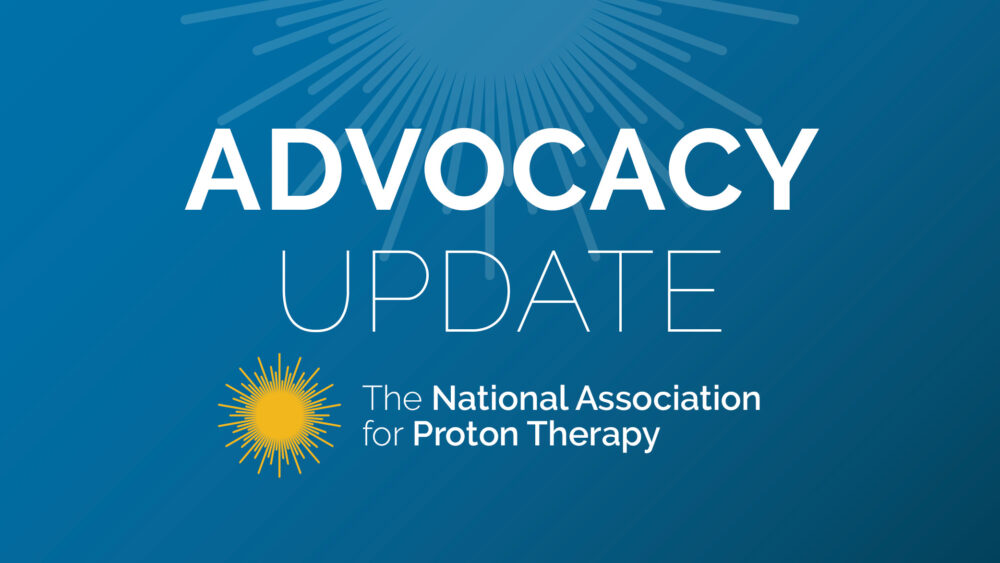Congressional Updates
Medicare Payment Rules Released
The Centers for Medicare & Medicaid Services (CMS) recently released 2025 proposed Medicare Physician Fee Schedule (MPFS) and Hospital Outpatient Prospective Payment System (OPPS) rules impacting payment rates and policies for various healthcare services. NAPT reviewed these rules to assess their implications for proton therapy coverage and reimbursement. Codes that map to APC 5625 (Level 5 Radiation Therapy procedures) (i.e., 77522, 77523, and 77525) have a proposed a 1.5% payment rate decrease. As we have done in years past, NAPT will be submitting official comments to CMS by their September deadline. We will continue to engage with CMS to advocate for fair and supportive payment structures.
Please see the links below for full text.
Labor-HHS-Education Appropriations Bill
This summer, the full House Appropriations Committee approved its version of the FY 2025 Labor-HHS-Education appropriations bill, which funds programs through the Department of Health and Human Services (HHS), including CMS. NAPT was once again successful in having Included in the Committee’s explanatory report accompanying the bill language encouraging Congress to work with stakeholders to ensure any future radiation oncology payment reform does not negatively impact patient access to innovative technologies. This is part of NAPT’s continued campaign to ensure Congress demonstrates support for innovative therapies like proton therapy through a variety of policy platforms.
Seniors’ Timely Access to Care Act
The Regulatory Relief Coalition continues to push for the passage of the Improving Seniors’ Timely Access to Care Act, which aims to streamline the prior authorization process in Medicare Advantage plans. The Act has garnered widespread bipartisan support, with significant momentum building in Congress. NAPT remains engaged in these efforts to ensure that prior authorization practices do not obstruct timely patient access to proton therapy. Download a fact sheet and find other information about H.R. 3107 from the Regulatory Relief Coalition here.
Radiation Oncology Case Rate (ROCR) Act
The Radiation Oncology Case Rate (ROCR) Act was introduced by Senator Thom Tillis (R-NC) in the U.S. Senate (S. 4330) and Representatives Brian Fitzpatrick (R-PA), Jimmy Panetta (D-CA), John Joyce, MD (R-PA), and Paul Tonko (D-NY) in the House of Representatives (H.R. 8404) in May 2024. This legislation directs the Secretary of the Department of Health & Human Services (HHS) to establish a mandatory radiation oncology case rate value-based payment program, where per-episode payments are made to radiation therapy providers for treating Medicare Part B beneficiaries with one of 15 specified cancer types.
Key features of the ROCR legislation include mandatory participation, a limited 10 year exclusion of certain therapies (including proton therapy), a single payment rate, and integration of new technology. The ROCR initiative also features a comprehensive per-episode payment model, which includes a health equity achievement add-on payment to address transportation insecurity and ensures payment equity across different service sites. As currently written, the bill allows for proton therapy to potentially be included at the same base rates as all other radiation therapy modalities after 10 years.
NAPT is supportive of payment reform that is strategically designed without advancing a single payment rate without appropriately adjusting for the resources, clinical complexity, and other critical considerations.. NAPT aims to safeguard access to this advanced treatment for patients who could benefit from it most.
NAPT in Washington DC
In July, Mike Baron, NAPT Health Policy and Regulatory Affairs Specialist, met with key stakeholders and Congressional staff members from the offices of influential policymakers in Washington D.C., at an event co-hosted by chairs of the Senate AI Caucus. Leading healthcare companies showcased AI-enabled medical devices and technologies while highlighting the need for a clear reimbursement pathway for these innovations. These technologies promise to enhance diagnostic and treatment options, including in oncology, where AI can complement advanced therapies like proton therapy.
Chevron SCOTUS Ruling
Proton therapy could benefit from the recent Supreme Court ruling on the Chevron doctrine by potentially gaining stronger judicial oversight in cases where Medicare or other federal agencies deny coverage for this advanced cancer treatment. Without the broad deference previously granted to agencies under Chevron, proton therapy providers may have a better chance of challenging unfavorable reimbursement decisions in court. This could lead to more favorable rulings that recognize the unique benefits and clinical justifications for proton therapy, which is often considered more precise and less harmful to surrounding tissues compared to conventional radiation therapy. By reducing the likelihood that courts will automatically defer to agency interpretations, the ruling could help ensure that reimbursement decisions are more closely aligned with current medical evidence and the specific needs of patients, thereby improving access to this cutting-edge treatment.
MedPAC Report Highlights
The Medicare Payment Advisory Commission (MedPAC) released its 2023 data book on health care spending and the Medicare program. The publication provides data on Medicare spending, demographics of the Medicare population, beneficiaries’ access to care, and quality of care in the program, among other information. Read more here.
DOWNLOAD A PDF OF THIS REPORT




